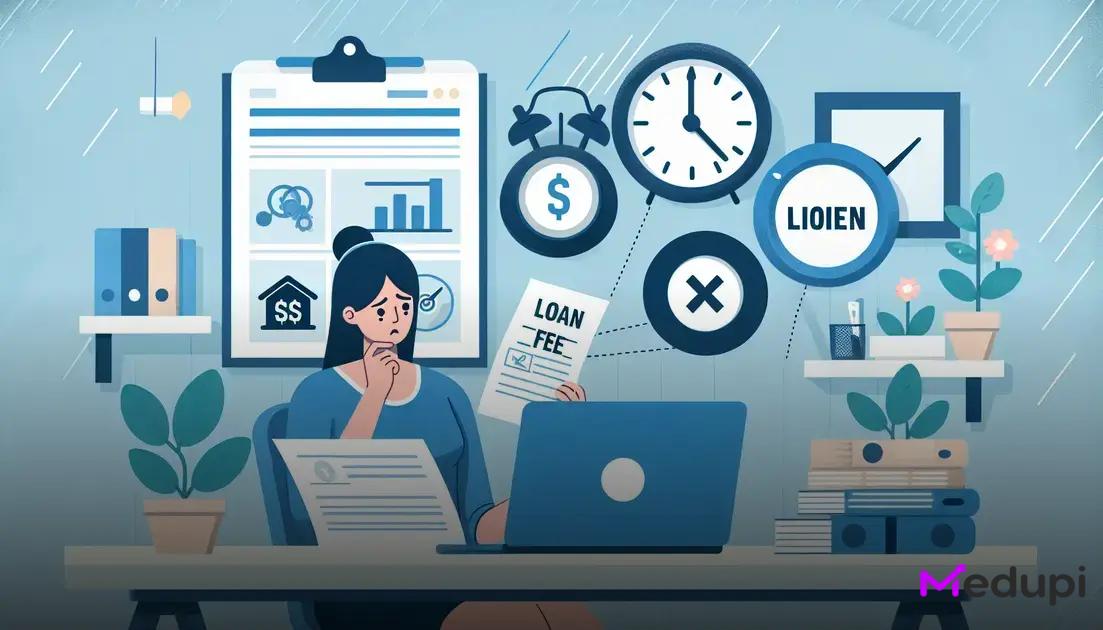ADVERTISEMENT
Personal loans offer a versatile solution for those unexpected expenses. Whether it’s for consolidating debt, funding a major purchase, or covering emergency costs, these loans can provide quick funds with flexible terms.
Understanding the basics of personal loans
Personal loans are a versatile and accessible option to cover a wide range of financial needs. They are typically unsecured loans, meaning you don’t need to provide collateral like a house or car to obtain them. This makes personal loans an attractive choice for those without significant assets.
ADVERTISEMENT
Loan Terms and Amounts
When understanding personal loans, it’s important to note that loan amounts can vary widely, often ranging from a few thousand to hundreds of thousands of rands, depending on the lender. The loan term—how long you have to repay the loan—can also vary, generally spanning from one to seven years.
Interest Rates
Interest rates on personal loans can be fixed or variable. Fixed rates mean your monthly payments remain constant throughout the loan term, while variable rates can fluctuate based on market conditions. It’s crucial to understand the interest rate structure, as it affects the total cost of the loan.
ADVERTISEMENT
Qualification Criteria differ between lenders but generally include factors such as your credit score, income level, and employment history. Lenders assess these to determine your ability to repay the loan. A higher credit score often translates to more favourable loan terms.
Documentation Required
The application process for personal loans typically requires submission of identification, proof of income, and sometimes proof of residence. Ensuring you have these documents ready can expedite the approval process.
Understanding these basics can help you make informed decisions about personal loans and how they fit into your financial strategy.
Top benefits of personal loans

One of the top benefits of personal loans is their versatility. Whether you need to consolidate debt, finance a major purchase, or cover an unexpected expense, personal loans can be tailored to suit your needs.
Another significant advantage is the fixed interest rates. Unlike credit cards with variable rates, personal loans often come with fixed rates, meaning your monthly payments remain consistent throughout the loan term.
Personal loans generally have predictable repayment schedules, which can simplify budgeting. You’ll know exactly how much you need to pay each month and for how long, helping you plan your finances more effectively.
Quick and Easy Application Process
The application process for personal loans is often straightforward. Many lenders offer online applications, allowing you to apply from the comfort of your home. Additionally, approval and funding can be swift, sometimes within a few days.
Borrowers with good credit scores may benefit from lower interest rates, making personal loans an affordable borrowing option. Even those with less-than-perfect credit might find favorable terms compared to other types of credit.
Personal loans don’t require collateral, reducing the risk associated with borrowing. This feature makes them an attractive option for those who need quick funds without putting their assets on the line.
Finally, personal loans can also support your financial health by helping you improve your credit score. Timely repayments can positively impact your credit history, demonstrating your reliability to future lenders.
How to apply for a personal loan
Applying for a personal loan is a straightforward process, but understanding each step is crucial for a successful application. Follow these steps to ensure you’re well-prepared:
1. Check Your Credit Score
A good credit score can significantly improve your chances of approval and secure you a lower interest rate. Obtain your credit report and correct any inaccuracies beforehand.
2. Determine the Loan Amount
Carefully calculate how much you need to borrow, keeping in mind your ability to repay. Only borrow what you genuinely need to avoid financial strain.
3. Compare Lenders and Loan Options
Research various lenders, including banks, credit unions, and online lenders. Compare their interest rates, terms, and fees to find the best option. Utilize comparison tools available online for more precision.
4. Prepare Required Documentation
Gather essential documents such as ID proof, proof of income, employment details, and bank statements. Having these ready can speed up the application process.
5. Fill Out the Application
Complete the application form with accurate information. Double-check all details to prevent delays or rejection. Many lenders offer online applications for convenience.
6. Submit and Wait for Approval
Submit your application along with the required documents. Some lenders have a quick turnaround time, while others may take a few days to review your application.
7. Review the Loan Agreement
Once approved, thoroughly read the loan agreement. Pay attention to interest rates, repayment terms, and any hidden fees. Clarify any doubts before signing.
8. Receive Funds
After you sign the agreement, the lender will disburse the loan amount to your bank account. Use the funds wisely and ensure timely repayment to maintain a good credit record.
Common mistakes to avoid when taking a personal loan

When securing a personal loan, it is crucial to stay informed and vigilant to prevent common mistakes. One major error is not assessing your financial situation adequately. Ensure you know your income, expenses, and debts to determine the loan amount you can realistically repay.
Another frequent mistake is failing to compare loan offers from different lenders. Interest rates, fees, and terms can vary greatly. Conduct thorough research to find the most favourable conditions.
Borrowers often overlook the importance of credit score. A poor credit score may lead to higher interest rates or loan rejection. Regularly check and improve your credit score before applying.
Avoid taking out more money than necessary. While it may seem beneficial to have extra cash, higher loan amounts mean more significant debt and repayment challenges.
Be cautious about ignoring the loan’s fine print. Always read and understand terms and conditions, hidden fees, and penalties for late payments to avoid unexpected charges.
Skipping a budget plan for repayments can lead to financial strain. Establish a solid budget to ensure timely and consistent payments.
Choosing the wrong type of loan can also be detrimental. Assess whether a personal loan is the best solution for your need, considering alternatives that may offer better terms.
Lastly, not seeking professional advice can hinder your decision-making process. Consult a financial advisor to navigate the complexities of personal loans effectively.
Tips for repaying your personal loan efficiently
Develop a comprehensive repayment plan to manage your debt efficiently. Start by setting a budget that includes all your monthly expenses and income. Allocate a specific portion of your income towards loan repayment.
Automate your payments to prevent late fees. Most financial institutions offer automatic payment options. This ensures you never miss a due date, helping you maintain a good credit score.
Explore the possibility of making extra payments. These additional payments reduce the principal amount faster, decreasing the overall interest paid. Even small extra payments can make a significant difference over time.
If your financial situation improves, consider refinancing your loan. A lower interest rate reduces the total loan cost, allowing for quicker repayment. However, assess any potential refinancing fees to ensure it remains beneficial.
Prioritise paying off higher interest loans first. Focus on loans with the highest interest rates, as these accrue more debt over time. By tackling these loans first, you minimise your total interest costs.
Communicate with your lender if you face financial difficulties. They may offer hardship plans or flexible payment options to help you manage your repayment efficiently.





